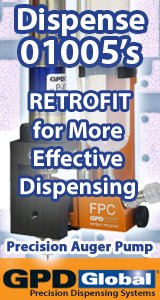Technical Articles From TE Connectivity
Read technical articles about electronics manufacturing added by TE Connectivity
- SMTnet
- »
- Technical Library
- »
- Contributors
- »
- Articles from TE Connectivity
5 technical articles added by TE Connectivity
Company Information:
Full Material Declarations: Removing Barriers to Environmental Data Reporting
Sep 04, 2019 | Roger L. Franz
Since the European Directives, RoHS (Restriction of Hazardous Substances) and REACH (Registration, Evaluation, Authorization and Restriction of Chemicals), entered into force in 2006-7, the number of regulated substances continues to grow. REACH adds new substances roughly twice a year, and more substances will be added to RoHS in 2019. While these open-ended regulations represent an ongoing burden for supply chain reporting, some ability to remain ahead of new substance restrictions can be achieved through full material declarations (FMD) specifically the IPC-1752A Class D Standard (the "Standard"), which was developed by the IPC - Association Connecting Electronic Industries. What is important to the supply chain is access to user-friendly, easily accessible or free, fully supported tools that allow suppliers to create and modify XML (Extensible Markup Language) files as specified in the Standard. Some tools will provide enhancements that validate required data entry and provide real-time interactive messages to facilitate the resolution of errors. In addition, validation and auto-population of substance CAS (Chemical Abstract Service) numbers, and Class D weight rollup validation ensure greater success in the acceptance of the declarations in customer systems that automate data gathering and reporting. A good tool should support importing existing IPC-1752A files for editing; this capability reduces the effort to update older declarations and greatly benefits suppliers of a family of products with similar composition. One of the problems with FMDs is the use of "wildcard" non-CAS numbers based on a declarable substance list (DSL). While the substances in different company's lists tend to have some overlap, no two DSL’s are the same. We provide an understanding of the commonality and differences between representative DSLs, and the ability to configure how much of a non-DSL substance percent is allowed. Case studies are discussed to show how supplier compliance data, can be automatically loaded into the customer's enterprise compliance system. Finally, we briefly discuss future enhancements and other developments like Once an Article, Always an Article (O5A) that will continue to require IPC standards and supporting tools to evolve....
Stereolithography and Simultaneous Engineering Speed Products to Market
May 07, 1999 | AMP Incorporated
Stereolithography is a handy tool not only for speeding a design to market but also in giving customers an early edge. By allowing a form-and-fit sample to be quickly made from a computer model, stereolithography coupled with simultaneous engineering allows customers to see product models early in the design cycle. And if a picture is worth a thousand words, what's a tangible sample worth?...
Solder Volumes for Through-Hole Reflow-Compatible Connectors
May 06, 1999 | AMP Incorporated
The success of surface-mount technology has not meant the end of through-hole connectors. For reasons ranging from availability to user concerns over reliability, through-hole connectors remain widely used. ...
Keeping Tin Solderable
May 06, 1999 | AMP Incorporated
Tin plating on a component lead makes its soldering easier. Everybody knows that. Not so well known is that tin plating has shelf life -- its ability to be easily soldered degrades over time. the speed and severity of degradation depends both on storage conditions and on the plating itself......
Specifying Current for the Real World
May 06, 1999 | TE Connectivity
To help the designer set the appropriate current level, AMP has developed a new method of specifying current-carrying capacity. This new method takes into account the various application factors that influence current rating. ...





